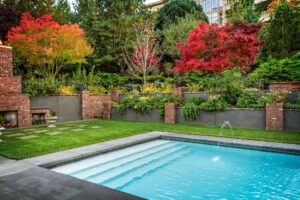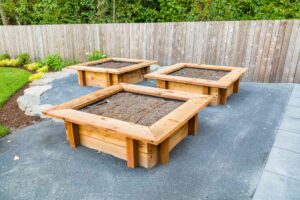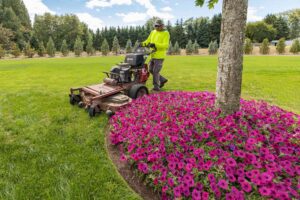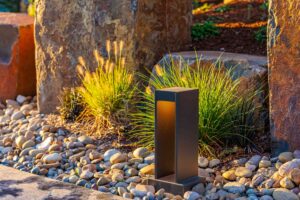When Should You Landscape? A Seasonal Guide
We often get asked what time of year is best for installing a new landscape. In this article we’ll provide detailed information that covers the nuances of each season; let’s dive in!
Landscaping
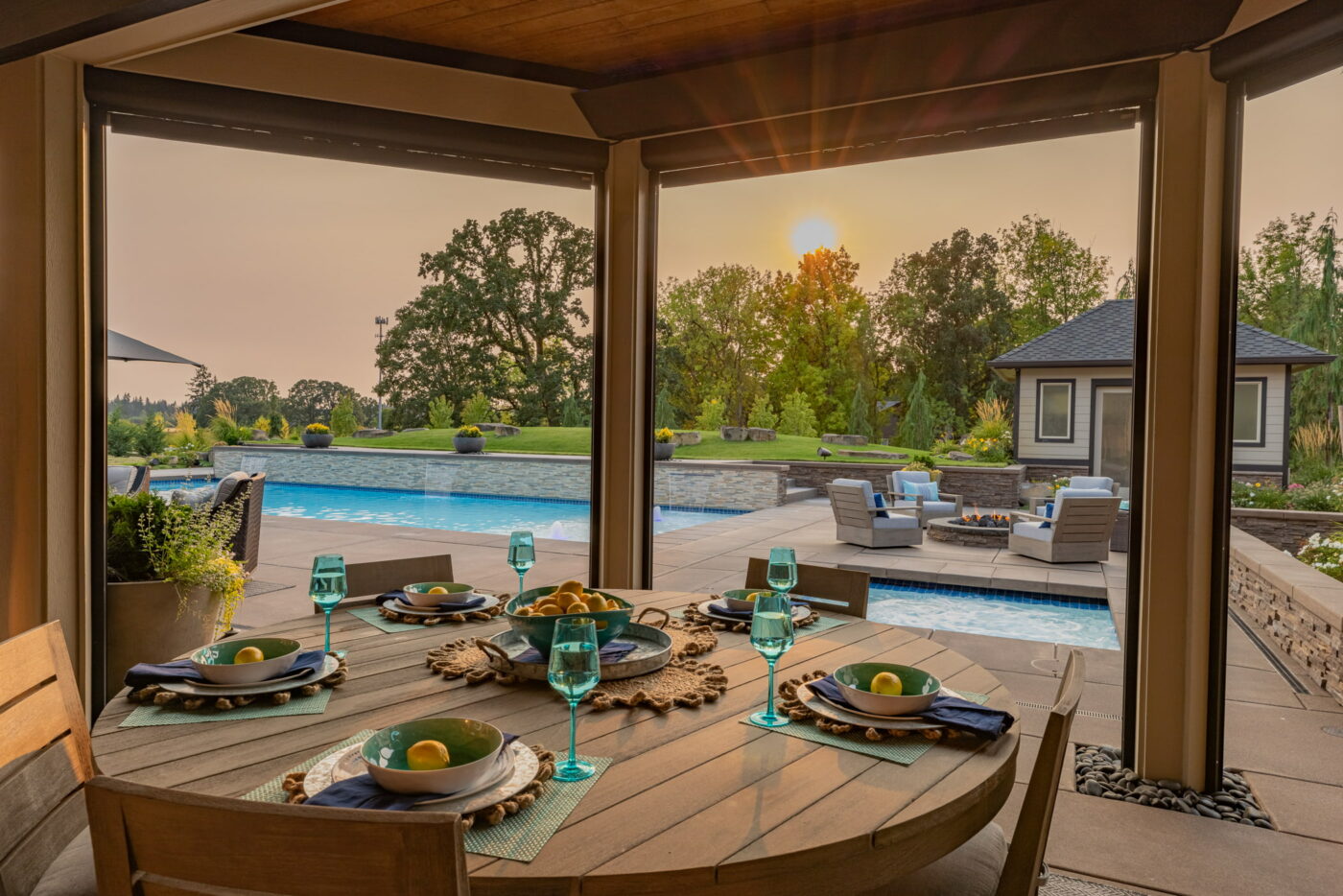
Ready to Start on Your Project? Get Started Here.
Landscaping is a significant investment in your property’s aesthetics and functionality. At GRO, one of the most frequent questions we get is: “What time of year is best for installing a new landscape?”. Thanks to the Pacific Northwest’s mild temperatures, which dodge both extreme droughts and deep freezes, we can landscape year-round. That said, each season has its own advantages and considerations. In this article we’ll provide detailed information that covers the nuances of each season; let’s dive in!
Fall Landscaping
Fall is an excellent season for landscaping, offering several distinct advantages:
- Optimal Turnaround Times: After the busy spring and summer landscaping seasons, the demand for landscaping services typically decreases. This means your project can be scheduled and completed more quickly, allowing you to enjoy your new landscape sooner.
- Ideal Planting Conditions: The cooler temperatures of fall create a less stressful environment for new plants. Additionally, plants are often healthier and more robust after their summer growth period. The incoming fall rains also provide natural irrigation, helping the newly planted flora establish strong root systems.
- Extended Enjoyment: By completing your landscaping in the fall, you set the stage to enjoy your outdoor space for the entire following year. This means you’ll have a beautiful, settled landscape ready for spring and summer.
Winter Landscaping
Winter might seem like an unconventional time for landscaping, but it holds unique benefits, especially in the Pacific Northwest:
- Mild Winter Climate: Unlike many other regions, the Portland area rarely experiences temperatures below freezing. This keeps the ground workable throughout winter, making it an excellent time for installation projects.
- Successful Plantings: Plants are typically dormant during winter, which means they can be transplanted with less risk of shock. The mild winter sun and consistent moisture allow plants to settle in before the more demanding growth season.
- Shorter Turnaround Times: Since winter is a slower period for the landscaping industry, your project can be completed more quickly. This ensures you’ll be ready to enjoy your new landscape as soon as the weather turns around.
- Year-Round Enjoyment: Just like with fall landscaping, completing your project in winter means your landscape will be established and ready for use throughout the entire outdoor season.
Spring Landscaping
Spring is traditionally the most popular time for landscaping, and for good reason:
- Increasing Daylight: Longer days and more sunlight stimulate both plant growth and our desire to spend time outdoors. This makes spring a great time to revamp your landscape.
- Perfect Growing Conditions: The combination of heavy spring rains and mild temperatures provides ideal conditions for new plantings. Plants can take root and thrive without the stress of summer heat.
- Extended Outdoor Season: Starting your landscaping project in early spring means you’ll have a beautiful outdoor space to enjoy for the majority of the year. However, due to high demand, it’s wise to begin planning your project as early as possible to avoid long wait times.
Summer Landscaping
Summer also has its merits for landscaping, despite some additional challenges:
- Peak Outdoor Season: The summer months are when we spend the most time outside, making it a popular time to update outdoor spaces. A summer landscaping project ensures your space is ready for all those barbecues, garden parties, and outdoor activities.
- Immediate Enjoyment: If your project is completed in early summer, you still have plenty of time to enjoy your new landscape before the colder months set in.
- Increased Watering Needs: The primary challenge of summer landscaping is the need for consistent watering. Newly planted trees, shrubs, and flowers require ample moisture to survive the hotter, drier weather. This means you’ll need to be diligent about irrigation to ensure the success of your plantings.
Ultimately, the best time to landscape your property is when you are ready. Each season offers its own benefits and challenges, but with proper planning and consideration of your local climate, you can achieve a beautiful and functional landscape at any time of the year. If you’re planning ahead and looking for the optimal season, fall and winter offer some of the most favorable conditions for landscaping in the Pacific Northwest. However, remember that immediate needs and personal preferences play a crucial role. Whether you choose to landscape in the bustling spring, the sunny summer, the calm fall, or the serene winter, the key is to start when it best suits your schedule and goals.
By explaining the unique advantages of each season, we hope to empower you to make an informed decision about when to start your project.
If that time is now, you can get started here.

